Vascular Access
STATSEAL TOPICAL DRESSING PRODUCTS
StatSeal topical dressing products offer a novel solution that helps standardize, simplify and minimize post procedure care and maintenance of catheter insertion sites.

DRESSING DISRUPTIONS PUT PATIENTS AT RISK
A large multicenter study confirmed that dressing disruption on vascular catheter insertions can increase infection risk by more than 12-fold.1 Acquisition of nosocomial catheter-related infections can lead to dire consequences for patients, leading top hospitals to adopt a standardized approach and a “zero tolerance for blood” policy to prevent them.2,3
THE STATSEAL SOLUTION
StatSeal hemostatic dressings work independently of the clotting cascade to form an instant occlusive seal over catheter insertions that prevents oozing, bleeding and dressing disruption by keeping sites dry and intact until the scheduled dressing change.
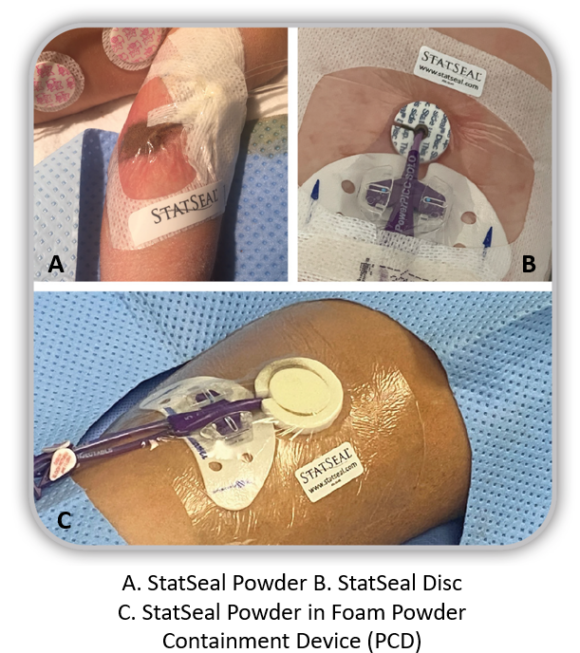
Creates an instant seal
- Works with any protein-rich body fluid to prevent oozing and bleeding
- Does not rely on clotting cascade – works for patients prone to bleeding
Minimizes dressing disruptions
- Significantly reduces unplanned dressing changes4-6
- Keeps sites dry and intact, until the scheduled dressing change4-6
Improves outcomes
- Controls vascular access exit site bleeding4-6
- Improves delivery of atraumatic care and patient comfort4,6
STATSEAL CLINICAL DATA
A recently published study in the British Journal of Nursing demonstrates StatSeal efficacy for managing PICC exit site bleeding and improving patient outcomes. The article, authored by Angela Hastings and Andrew Barton is titled: “Rapid haemostasis to achieve dressing longevity: evaluation trial results using StatSeal catheter exit site protection.”
The purpose of the trial “was to evaluate the efficacy and safety of StatSeal for haemostasis following PICC line insertion. The trial was conducted on adult inpatients requiring a PICC or outpatients requiring a PICC for chemotherapy or home IV antibiotics.” The primary endpoint was dressings that lasted 7 days. Of the StatSeal dressings, 99% lasted 7 days, whereas only 7% of the dressings without StatSeal lasted 7 days.
The article also included a cost analysis indicating that StatSeal use provided a cost savings of at least £21.43 ($27.66 USD) per catheter. From the authors’ experience, many catheters without StatSeal are likely to require multiple unplanned dressing changes. The conclusion indicated “Using StatSeal improved patient outcomes and reduced the number of dressing changes required in a 7-day period, saving time and money. StatSeal is a reliable, valuable product for the management and control of vascular access catheter exit site bleeding.”6
STATSEAL PRODUCTS FOR VASCULAR ACCESS
StatSeal products are available in both powder and disc form to suit a wide variety of clinical applications. The discs are made from compressed powder encased in foam. Disc center hole sizes range from small to extra large to fit a full range of catheter sizes. Both powder products include an optional foam ring to contain the powder around the catheter site. StatSeal Advanced Powder contains more powder and has a more robust foam ring for large bore catheter insertions that are prone to heavy bleeding.

STATSEAL® APPLICATIONS
StatSeal products seal the site while stopping oozing and bleeding from:
- PICC/CVC placement
- Dialysis catheters
- Peripheral arterial catheters
- Umbilical catheters
- ECMO cannulas
- Temporary hemodynamic support devices
- Procedures resulting in external bleeding
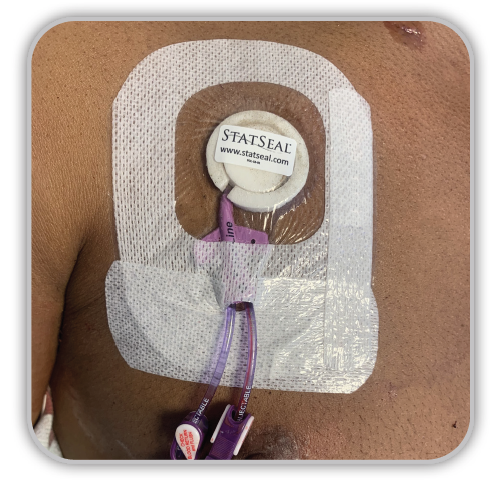
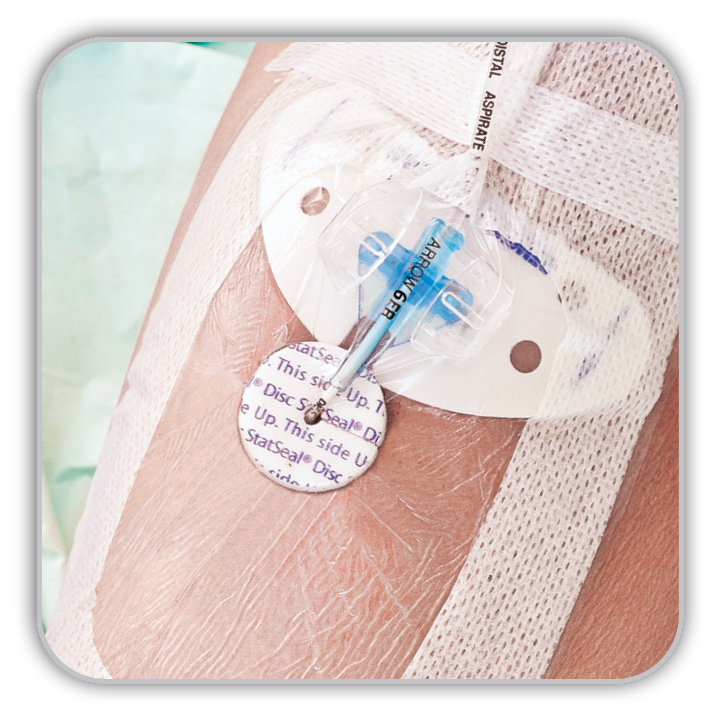
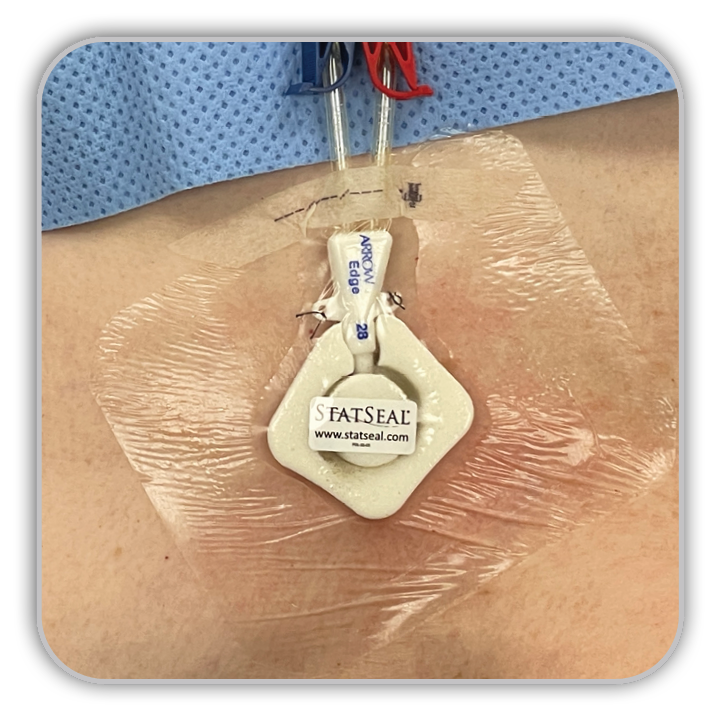
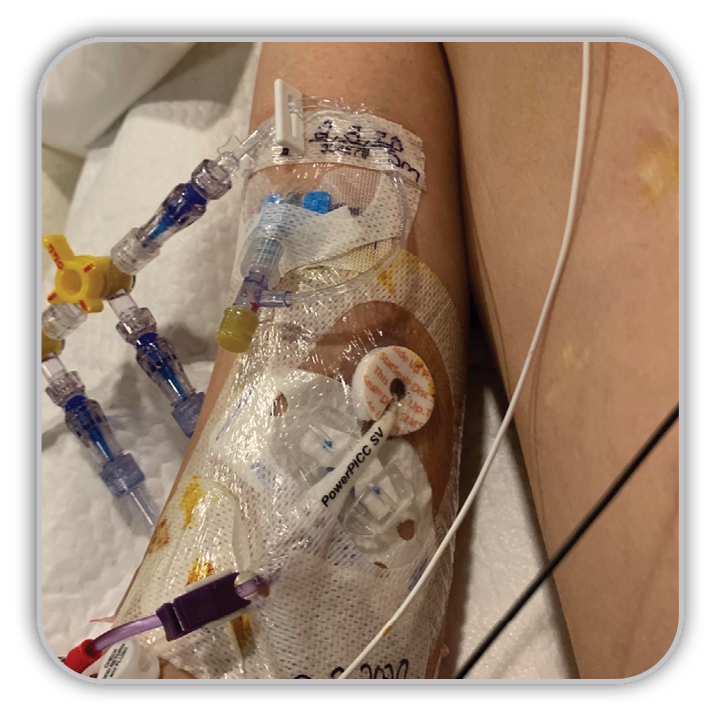
INFUSION THERAPY STANDARDS OF PRACTICE
Vascular Access Device (VAD) Assessment, Care and Dressing Changes:
“Consider the use of a hemostatic agent . . . to reduce the need for unplanned dressing changes after peripherally inserted central catheter (PICC) insertion.”7
HOW DOES STATSEAL WORK?
StatSeal products are comprised of a hydrophilic polymer and potassium ferrate. As a manual pressure adjunct, StatSeal products have a two-step mechanism of action that occurs simultaneously to instantly form a low pH occlusive seal or physical barrier over the wound site, letting nothing in or out.
- The hydrophilic polymer rapidly dehydrates the blood and absorbs exudate, stacking up desiccated blood solids beneath to form a seal.
- The potassium ferrate binds the blood solids and proteins together, adhering the seal to the wound to stop bleeding and oozing.
Beneath the seal, the pH is neutral and blood solids and proteins continue to stack naturally. Above the seal the hydrophilic polymer acts as a desiccant and creates an acidic environment with a pH of ~ 2.8
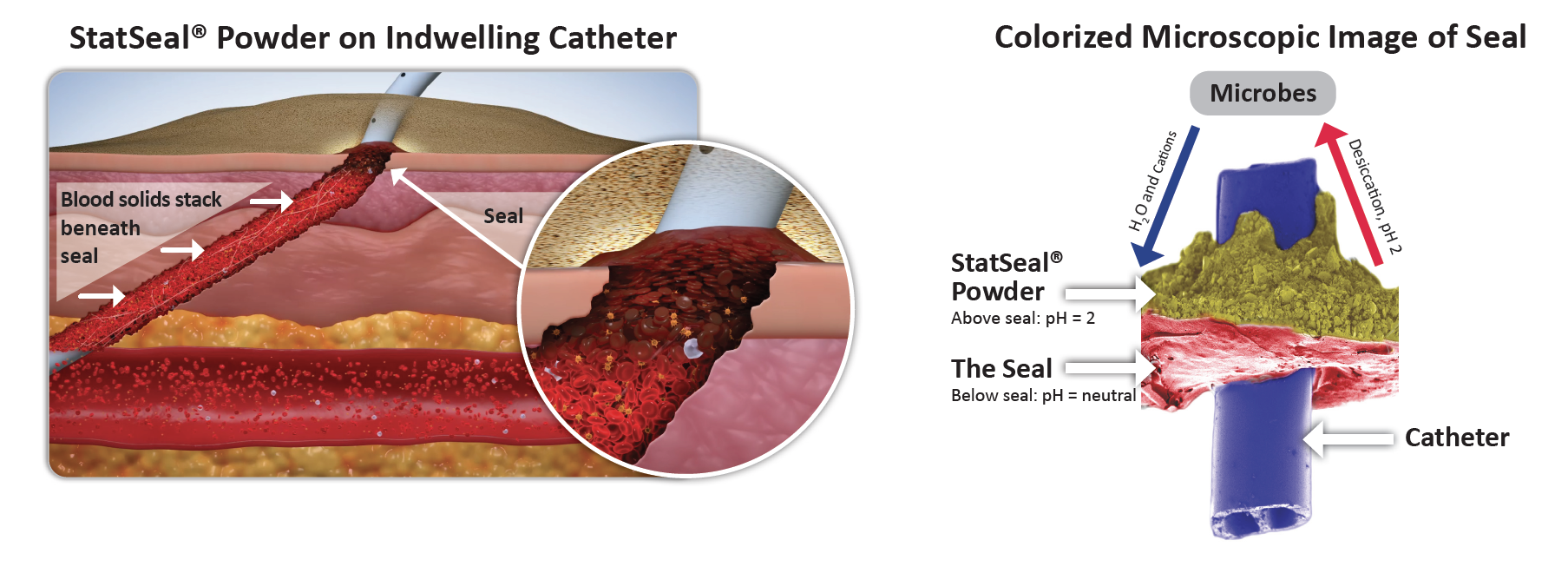
References: [1] Timsit JF, Bouadma L, Ruckly S, et al. Dressing disruption is a major risk factor for catheter-related infections. Crit Care Med. 2012 Jun;40(6):1707-14. [2] Olaechea PM, Palomar M, Álvarez-Lerma F, et al. Morbidity and mortality associated with primary and catheter-related bloodstream infections in critically ill patients. Rev Esp Quimioter. 2013 Mar;26(1):21-9. [3] Olsen M, Morris M. Fresh Eyes Focused on Safety: Nurses Partner with Engineering Students to Eliminate CLABSIs in Cardiac Surgery Patients. Lecture presented at AVA Annual Meeting; October 4-7, 2019; Las Vegas, NV. [4] Hastings A, Barton A. Rapid haemostasis to achieve dressing longevity: evaluation trial results using StatSeal catheter exit site protection. Br J Nurs. 2024 Jul 18;33(14):S8-S14.[5] Wilder KA, Wall B, Haggard D, Epperson T. CLABSI Reduction Strategy: A Systematic Central Line Quality Improvement Initiative Integrating Line-Rounding Principles and a Team Approach. Adv Neonatal Care. 2016 Jun;16(3):170-7. [6] Blough L, Hinson K, Hen J. The science of a seal for PICC line management: bio seal CVC powder. J VAS Access. 2010;15(2):66-73. [7] Gorski L A, Hadaway L, Hagle M, et al. 2016 Infusion therapy standards of practice. Journal of Infusion Nursing, 39(1 Suppl.), 41:L. [8] Biolife, LLC, 510(k) K080210, Section 18.3.

